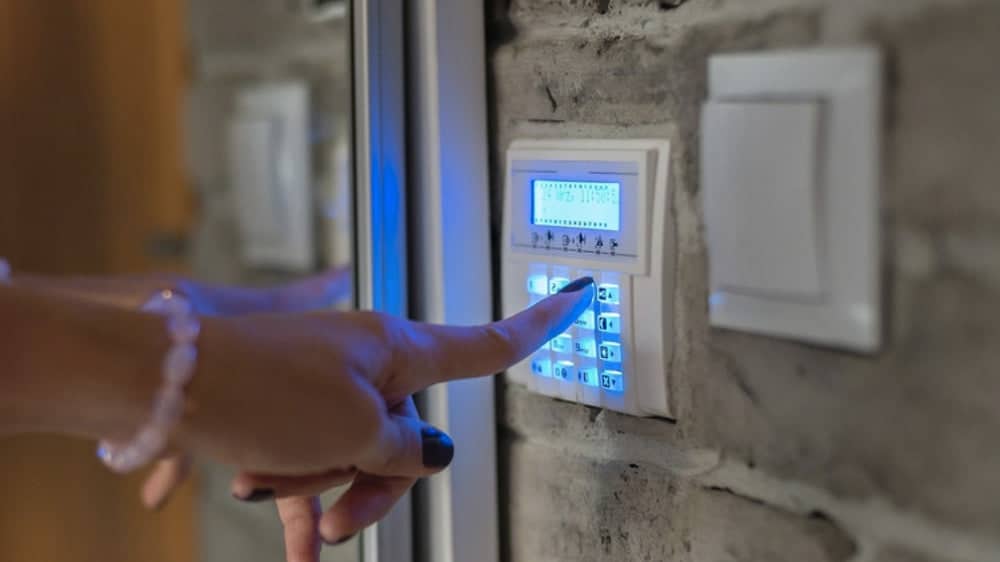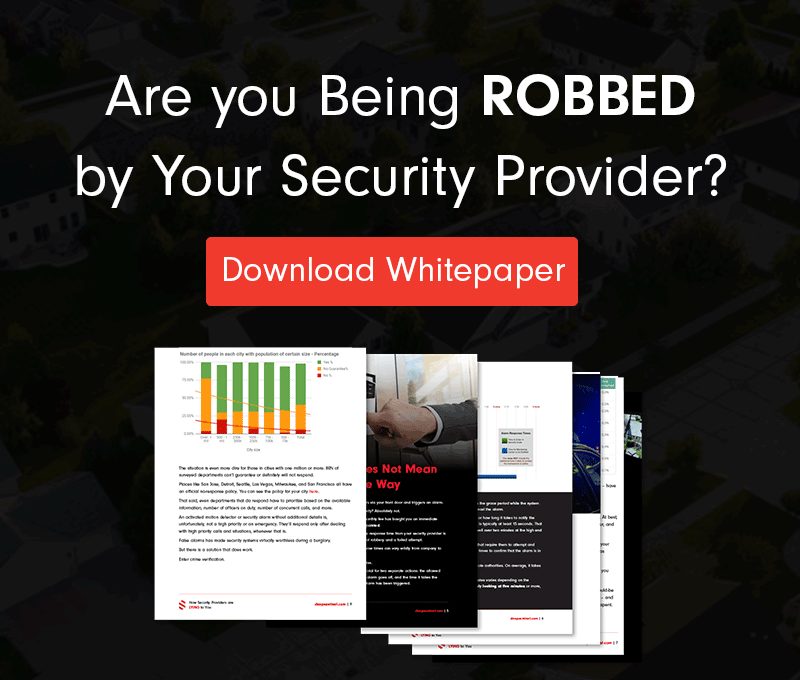Are You Being Robbed by Your Home Security Provider?

Your house is a major investment, and it needs to be protected. Similarly, your family is the most precious thing in your life, and it deserves ironclad security. Getting robbed puts both of these in jeopardy.
Most of us are willing to do whatever it takes to keep our property and loved ones out of harm’s way. To that end, the home security industry is expected to be worth $74.75 billion by 2023. Surprisingly though, only 17% of American homes have a security system, and that’s despite the fact you’re 300% more likely to be robbed without one.
Are you in that group? If not, consider:
- 3 out of 4 American homes will be the victim of a burglary in the next 20 years
- Roughly 3.7 million homes are burglarized every year in the United States
- On average, the police clear only 13% of burglaries because there are no witnesses or evidence
- A break-in lasts between 8-10 minutes from start to finish
- The average loss per break-in is $2,230 (to say nothing of psychological, mental, and emotional damages)
- About two-thirds of home burglaries occur between the hours of 6 a.m. and 6 p.m., while most people are at work
- 83% of burglars admit to checking for a home security system when selecting a target, and 60% immediately move on to the next property when they see one
It’s clear that a home security system of some sort is a worthwhile investment. After all, you can’t put a price on peace of mind.
If you’re in the minority and already have a system in place, you may feel like you’ve done everything possible.
But here’s the thing: you’re probably wrong.
The Problem With Most Security Providers
As seen in the statistics above, any home security system is always better than no system at all. Even putting up a lawn sign and a few stickers can increase the odds of a robber passing your home in favor of another house, although it’s no guarantee.
That said, if you pay $10–$50 per month for security and think you’re fully protected from break-ins, you’re getting robbed by your provider. That’s a bold claim, but true nonetheless.
Most systems like ADT and Ring use some combination of video recorders, signage, and alarms. Some may even promise 24/7 “monitoring” in that monthly fee. This is helpful for providing video evidence of the crime after the fact. But the inherent flaw in traditional systems is that they don’t do anything until the break-in has already happened.
The alarm goes off only after the burglar triggers your door or window sensor and gets inside your house. Cameras record as a stranger rifles through your personal belongings, but do nothing to stop it. The crime has not been prevented or deterred, only detected and recorded.
It’s better than nothing. But it’s probably not what you thought you were getting when you signed a contract, right?
An Alarm Does Not Mean Help is on the Way
Here’s a typical scenario: a burglar enters through your front door and triggers an alarm. You’re being robbed. Are the police on their way to your property?
Absolutely not.
First, there’s a delay of 30 seconds or more. This is the grace period for someone to enter the security code and cancel the alarm.
Next, there’s your security provider’s response time, or how long it takes to notify the monitoring center that an alarm has gone off. This is typically at least 15 seconds. That brings us up to 45 seconds at the low end—and well over two minutes at the high end—since the criminal entered your home.
Once notified, most providers require monitoring center employees to attempt contacting the homeowner two or three times to confirm that the alarm is in fact a break-in. This can take several minutes.
Then, and only then, will they contact the authorities. On average, it takes eight full minutes to reach this stage.
The average police response time in the United States varies depending on the location and crime in progress. But you’re probably looking at five minutes or more, with the majority taking more than 10 minutes.
Home burglaries, unfortunately, are a low priority. Almost half (46.9%) have an expected response time of 11-60 minutes.
Remember how long the average home burglary lasts: 8-10 minutes. You see the problem.
What You’re Really Paying For
The takeaway? Traditional home security providers simply can’t stop a break-in. At best, they can record it and pass it on to the police. Those officers may not show up for an hour. And they likely won’t have enough evidence to clear the case.
The vaunted 24/7 monitoring that you erroneously believed in doesn’t mean someone is always watching your home. It’s nothing more than human intervention after and only after the crime has occurred. The criminal is already in your house.
Do you still feel you’ve done everything possible for your home and family? Or are you starting to think you’re paying for a false sense of security?
You’re paying up to $50 per month and hoping a sticker is enough to intimidate would-be burglars. That’s up to $600 each year for something that is only useful to you—and even then only superficially—if a burglar actually strikes. In reality, you’re getting robbed by an intruder and the company that’s supposed to be protecting you. And that’s not money well spent.
A Better Way
A truly valuable home security system needs to prevent and deter crime, not just record it. And the system should shorten the response time of both the provider and the police.
Deep Sentinel is a proactive video surveillance system that uses AI to monitor the perimeter of your home and detect suspicious activity. If trouble pops up, the system notifies live security guards instantaneously. The highly trained guards can then engage with the suspect via real-time audio and video. This is typically enough to stop crooks in their tracks before they gain access to your home.
If the situation warrants it, Deep Sentinel guards notify the police and provide live updates about the suspect and the crime in progress.
From start to finish? 30 seconds or less. And with real ears and eyes to verify a crime, the system produces zero false alarms. As a result, the police treat those calls as a top priority. That’s the Deep Sentinel difference.
So, are you being robbed by your home security provider? The short answer is YES if you’re relying on antiquated systems and providers. They’re promising something they just can’t deliver.
Deep Sentinel delivers.
Need a Solution that Prevents Crime?
Deep Sentinel is the only security technology that delivers the experience of a personal guard on every customer’s home and business. Visit deepsentinel.com, call 833-395-1386, or request a free security consultation below:

